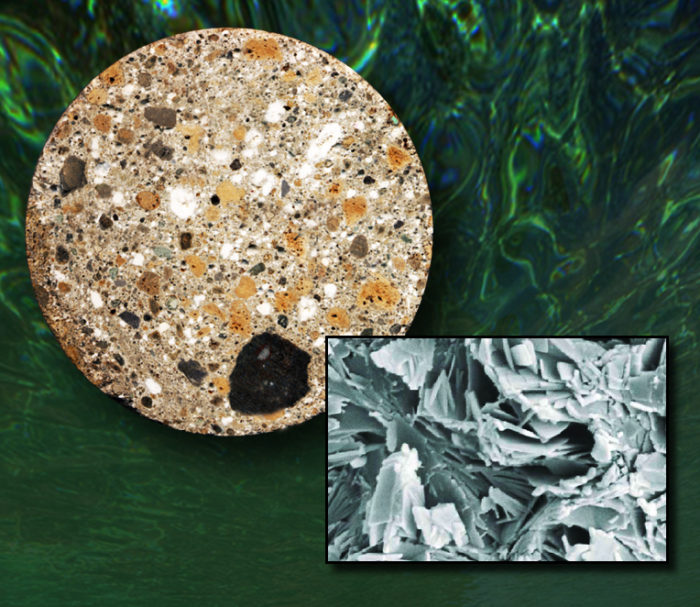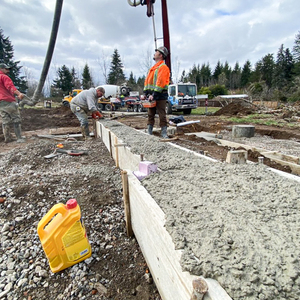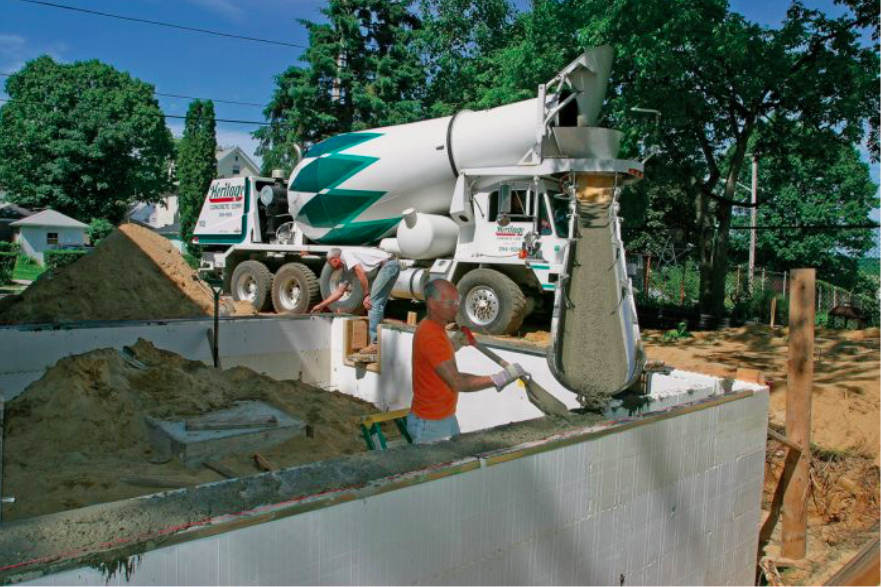
Image Credit: Lawrence Berkeley National Laboratory/University of California at Berkeley
Underwater samples taken from a 2,000-year-old Roman breakwater could point the way to producing more durable concrete and reducing carbon emissions associated with cement manufacturing.
The Lawrence Berkeley National Laboratory (LBNL) announced that researchers working the Bay of Naples in Italy sampled concrete that is chemically different and more durable than its contemporary equivalent. In addition, the limestone used to make it was fired at much lower temperatures than the temperatures required for today’s lime kilns.
Concrete is widely used but carries a steep carbon penalty
Concrete is the most widely used construction material in the world. The glue that holds it together is portland cement, a mixture of limestone and clay that’s baked at high temperatures in giant kilns fired by powdered coal, oil, or gas.
Modern kilns operate at temperatures of more than 2,600°F, but Berkeley researchers discovered the Roman process required less lime and that it could be processed at a much lower temperature, 1,652°F.
“It’s not that modern concrete isn’t good – it’s so good we use 19 billion tons of it a year,” says Berkeley Lab project leader Paulo Monteiro. “The problem is that manufacturing portland cement accounts for seven percent of the carbon dioxide that industry puts into the air.”
For every ton of concrete that’s produced, a ton of carbon dioxide also released into the atmosphere, researcher Marios Soutsos told Chemistry World in a 2008 interview. Modern kilns are more efficient, producing about 800 kilograms of carbon dioxide per ton, but that’s still a significant amount.
Carbon emissions are not only the result of burning the fuel needed to attain high kiln temperatures but also the breakdown of the calcium carbonate itself.
The Roman recipe
According to the LBNL report, Romans mixed lime and volcanic rock to make concrete.
“For underwater structures, lime and volcanic ash were mixed to form mortar, and this mortar and volcanic tuff were packed into wooden forms,” the Lab said. “The seawater instantly triggered a hot chemical reaction. The lime was hydrated – incorporating water molecules into its structure – and reacted with the ash to cement the whole mixture together.”
The best ash for maritime concrete came from the town of Pozzuoli. Ash with similar characteristics, which is called “pozzolan,” is found all over the world.
In modern concrete, the cement binder is a compound of calcium, silicates and hydrates or C-S-H, LBNL reported, while Roman concrete had more aluminum and less silicon. The calcium-aluminum-silicate-hydrate (C-A-S-H) “is an exceptionally stable binder.”
“For us, pozzolan is important for its practical applications,” says Monteiro. “It could replace 40 percent of the world’s demand for Portland cement. And there are sources of pozzolan all over the world. Saudi Arabia doesn’t have any fly ash, but it has mountains of pozzolan.”
Not unlike modern fly-ash concrete
The Romans’ concrete recipe seems to show some similarities to modern blends that replace some of the portland cement with fly ash, a waste product from coal-fired power plants or blast-furnace slag. According to the U.S. Environmental Protection Agency, up to 40% of the cement in concrete (by weight) can be replaced with coal fly ash.
Paul Preuss, who wrote the report on the team’s findings for LBNL, said there are certainly similarities between the two types of concrete. “While fly ash and pozzolan have similar chemistry, many places have access to pozzolan that may not have ready access to fly ash (e.g., Saudi Arabia),” he said in an e-mail.
Preuss added that portland cement sets and cures quickly when compared to Roman seawater concrete, so Roman concrete “isn’t a panacea.”
Weekly Newsletter
Get building science and energy efficiency advice, plus special offers, in your inbox.















One Comment
Secret Ingredient
Back in the 1950's a Ukrainian scientist by the name of Victor Glukhovsky investigated why the concrete Roman structures withstood the test of time. He surmised that the Romans used animal blood. Supposedly the blood altered the cement and introduced air bubbles that protected it from freezing and thawing.
I called my local concrete plant and asked them if they would use more fly ash and blood in my next mix. They surprisingly hung up the phone.
All kidding aside, this was an interesting article. It goes to show that not all concrete is created equal. It's important to make sure the concrete plant is creating a good mix and that the site contractor is not watering down said mix at the job site.
Log in or create an account to post a comment.
Sign up Log in